New Case Study: Our Lady Help of Christians Catholic Church by Richard Gilbert Scott
Richard Gilbert Scott passed away in July 2017 and was the fourth generation of England’s greatest architectural dynasty, well known for his ecclesiastical designs.
Three of his churches having attracted Grade II listed status. One of these is Our Lady Help of Christians Catholic Church in Birmingham, which is among his most famous designs and a noteworthy example of 1960’s ‘Brutalist’ architectural design. It is recognised by the 20th Century Society as a notable example of the radical rethink of the planning of Roman Catholic churches brought about by the Second Vatican Council.
The church as a distinctive obelisk roof, originally finished with a copper membrane.
Roof had reached the end of its design life
The copper roof was resurfaced in 2000, however the fabric had deteriorated in recent years and the covering had reached the end of its useful working design life.
Project leaders, APEC Architects, conducted extensive research on the church’s original roofing and detailing, which included a visit to the RIBA Archives at the Victoria & Albert Museum to determine the most appropriate restoration approach.
APEC specified a new covering for ‘Our Lady’ that will achieve a longer design life to better protect the fabric of the building.
With the in-depth product knowledge of suitable conservation methods for listed buildings, SIG Design & Technology played a vital role in the material choice.
Due to the church’s architectural status, Historic England took an interest in the restoration and specified that the roofing finish should match the colour and texture of the original copper membrane of the 1960s in appearance.
Liquid roofing solution for a conservation project
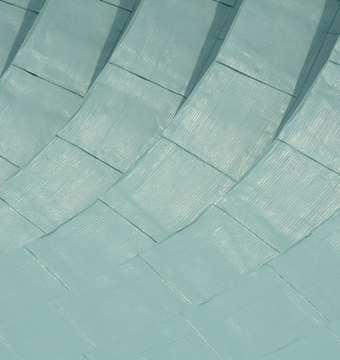
After establishing the client brief, SIG D&T concluded that a liquid solution was the best answer.
There were two prerequisites to the choice of membrane; identical colour matching to the original finish and longevity through the choice of a long lasting, resilient liquid waterproofing.
To recreate the tint of the copper roof at its 1968 peak appearance, a number of colour options were tried, and SIG consulted a painting of the church which is believed to have been created by a parishioner at ‘Our Lady’.
The perfect colour match was achieved by providing Repoma’s manufacturer with an original colour sample. A spectrometer determined the precise pigment ratio required and the top coat was supplied mixed ready for application.
With its unique “PUMA” technology, Repoma combines the flexibility and crack bridging qualities of PU liquids and the key renovation benefits of MMA resins. Well suited for the repair of roofs, Repoma can waterproof almost any roof surface without removal. The membrane and fabric combine to offer a highlyflow text elastomeric system which lasts for up to 30 years, even at -30°C or at very high temperatures.
Cold applied, Repoma can adhere to any form of detailing and requires no priming. It is very fast curing, dries in 30 minutes at 15°C and is ready for foot traffic in an hour. Its speed of application by hand supported the work of SIG Design & Technology’s DATAC accredited roofing contractors, The Rio Group.
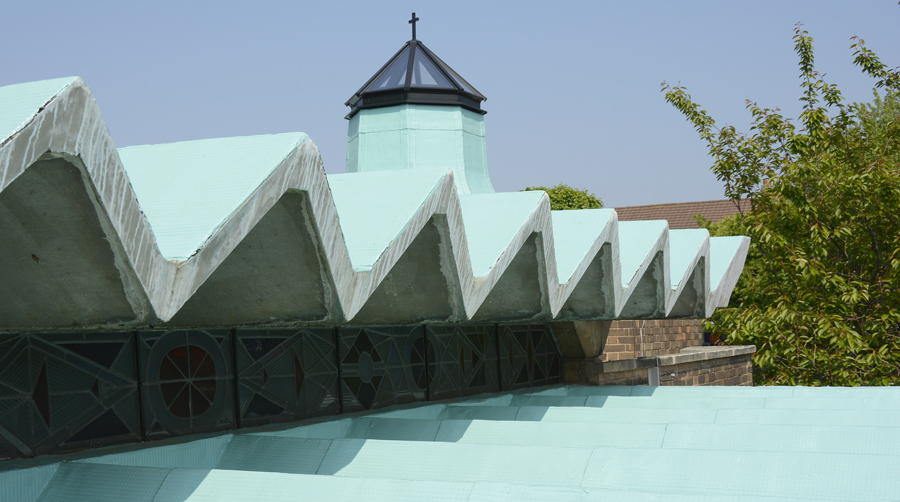
James Phillips at APEC Architects said: “We received a great deal of assistance from SIG in reaching a solution that would be technically sound, as well as being suitable for prominent use on this Grade II* listed building. SIG assisted by carrying out extensive research on a number of products to ensure they would be suitable for use in this challenging context.
“This included the provision of a number of samples and on site tests to confirm adhesion and to satisfy the relevant authorities. The Repoma product that was chosen has been successful in meeting all of these challenges and has greatly enhanced the appearance of the church’s dramatic roof form.
“As a liquid product, it could be overlaid on the existing membrane, meaning that the pattern and texture of the original finish can still be appreciated, something that was critical to retaining the integrity of the original architect’s vision.”
More Information
- Read the complete case study here including more information about the project and the product, and more photographs, or download a pdf of the case study.
- Visit the 20th Century Society’s page on Our Lady Help of Christians, which includes photographs of the interior.
- Read the church listing on the Historic England website.
- Our Lady Help of Christians will feature in the September/October edition of Church & Heritage Building magazine.
- Get in touch if your church needs help with a membrane or metal roof.




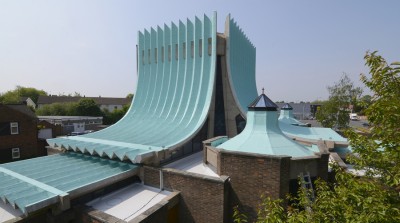
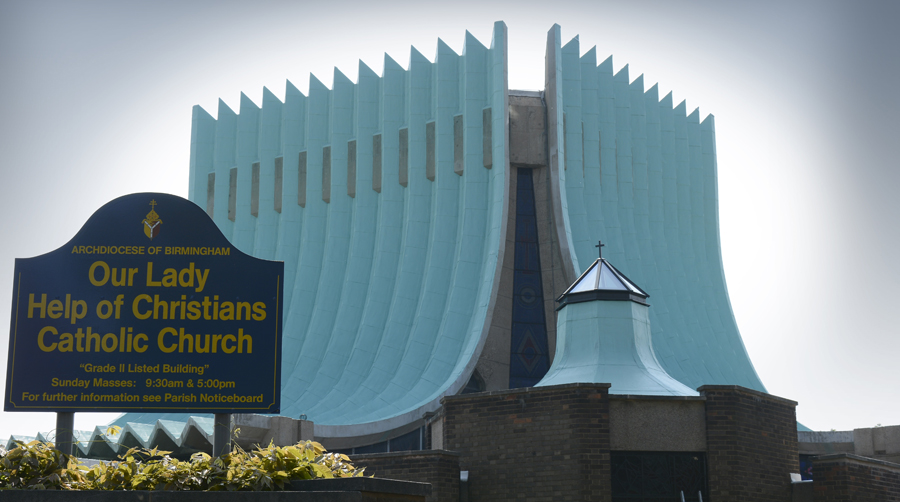
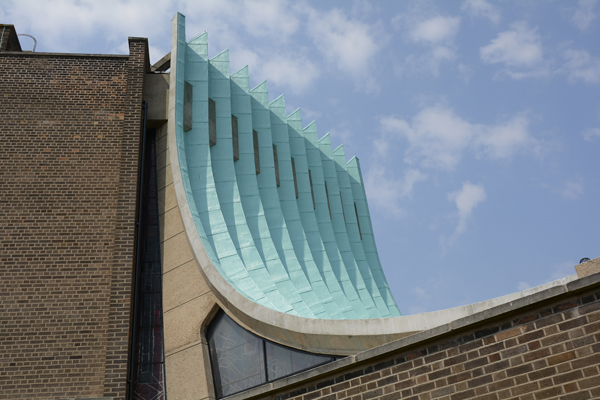









Recent Comments